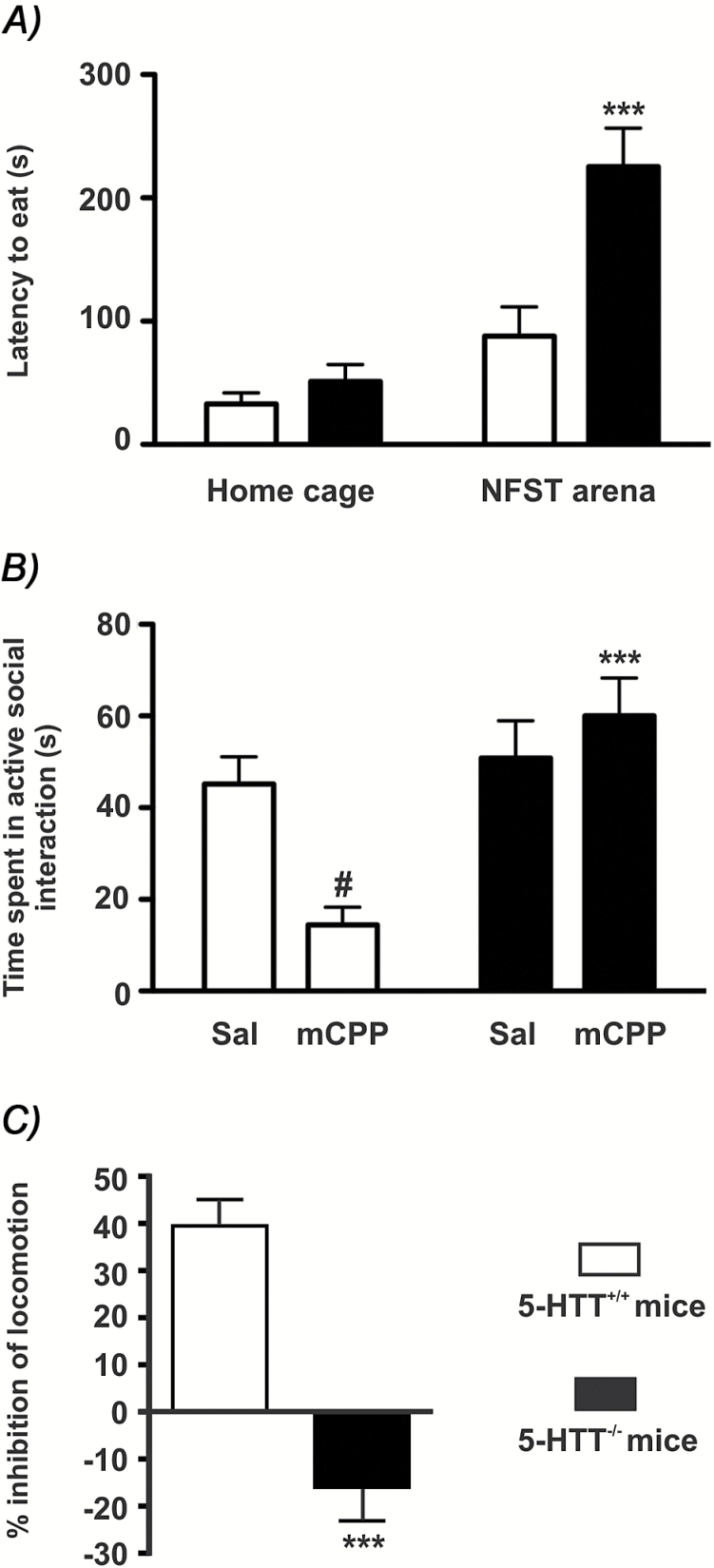Figure 1.
Anxiety-like profile and 5-HT2C receptor-mediated hypolocomotion in mice lacking the 5-HT reuptake carrier (5-HTT-/-).
(A) The latencies to feed were compared in food-deprived 5-HTT-/- versus 5-HT reuptake carrying (5-HTT+/+) mice, placed in the novelty-suppressed feeding test (NSFT) arena or left in their home cage. Values are mean ± standard error of the mean (SEM; n = 7–8). Two-way ANOVA indicated a significant effect of environment [F(1,27) = 27, p < 0.0001] and of genotype [F(1,27) = 12.6, p = 0.001], and a significant environment x genotype interaction [F(1,27) = 7.4, p = 0.01]. *p < 0.001. Bonferroni’s post hoc test indicated a significant effect of genotype in the NSFT arena. (B) Time spent in active social interaction in saline- or m-chlorophenylpiperazine (mCPP)-treated mice. Values are mean ± SEM (n = 6–7). Two-way ANOVA indicated a significant effect of genotype [F(1,26) = 13.6, p = 0.001] and no overall effect of mCPP [F(1,26)= 2.4], but a significant genotype x mCPP interaction [F(1,26) = 8.3, p < 0.01]. Bonferroni’s post hoc test indicated a significant effect of genotype in the mCPP groups (*p < 0.001) and a significant effect of mCPP vs. saline-only treatment in the 5-HTT+/+ group (#p < 0.05). (C) The hypolocomotion induced by RO-60,0175 in 5-HTT+/+ mice (in counts/15min; saline: 266±23; RO: 159±15; means ± SEM, - 40.2±6 %, n = 6, p < 0.01) was not observed in 5-HTT-/- mice (saline: 238±53; RO: 277±17; +16±7 %; n = 6, n.s.). *p ≤ 0.001; student’s t-test comparing the percentage inhibition of locomotion produced by RO-60,0175.

